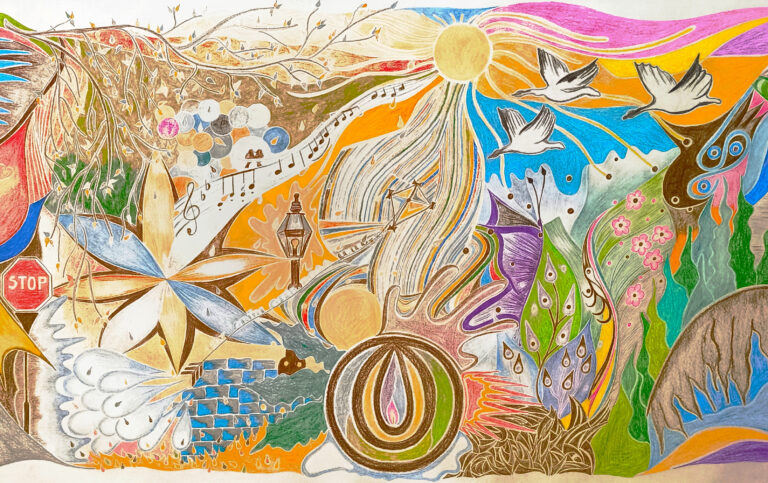Hope is a word I struggled with for a number of years because it was too often used superficially. I’ve since studied the topic and have a deeper understanding of what hope really is. Keep reading to learn why I assert that trauma-sensitive educators are a sign of hope. Plus, gain ideas for your classroom.
Once in a team meeting, a parent asked tough questions. A professional responded with, “Sometimes hope is the strategy.” The parent sunk and withdrew, feeling unseen and helpless. She already felt convicted about helping her child but needed professional expertise to be successful in doing so. The response she received indicated that no such support was coming. That parent was me.
I knew then that hope wasn’t a strategy just like I know today that resilience isn’t an intervention—something else I’ve heard professionals say over the years. Suggesting these things dismisses genuine hope (or resilience), and it distances any human on the receiving end of such claims. If hope is the strategy, after all, doesn’t it mean that one’s supposed lack of hope is to blame when the strategy doesn’t work? I can think of no faster way to shame any parent, educator, or other human who cares.
What is hope then? And, how might we consciously focus on it as educators within our school communities?
Hope Defined
Dr. Joseph Bellezzo said, “Hope is the bridge between the impossible and possible,” which is an idea I can embrace! It means hope is action that comes from recognizing where we are, where we’d like to go, and being able to imagine as well as embody how to get there from here. Because I had hope in the meeting I was in as a parent years ago, I asked tough questions. I also understood that answers to those questions were the only way that our joint hope could be actualized. To be hopeful, we have to believe in our power to make a difference and/or be connected to those who can support us in accessing or developing what’s needed. It requires us to ask for help when we need it and to respond genuinely to those who are asking for our assistance too. (Brown, 2021; Gwinn & Hellman, 2022)
Hope is not a magical wish; nor is it anything we muster up all on our own—at least not usually. Often, it’s rooted in relationships and cultivated in hard times. For some folks, it’s linked to spirituality or faith. Even with conviction, support, strong skills, and divine intervention (if you so believe), we may act by way of hope one step at a time and make plenty of mistakes along the way. Hope, then, is messy and non-linear.
We don’t necessarily come out of any hopeful process unscathed either, which is why I wrote the following words in Building Trauma-Sensitive Schools. “This hope has seen things—hard things. She knows what we are faced with, and she does not look away from the challenge. In fact, she knows that we are going toward it like it is our job (because, folks, it is our job!), even though we may tremble and shake, doubt ourselves, or want nothing more than to turn back some days. This hope will helps us do this work. She will be there whispering in our ear that we must tell the truth, and when necessary, fight stubbornly for what is needed so we have a realistic chance to help, really help, our kids.” (p. xiv).
Matthew (@CrowsFault on Twitter) would agree with my words I think. Matthew (2022) tweeted, “People speak of hope as if it is this delicate, ephemeral thing made of whispers and spider’s webs. It’s not. Hope has dirt on her face, blood on her knuckles, the grit of the cobblestones in her hair, and just spat out a tooth as she rises for another go.” I literally can’t read these words, which I’ve done hundreds of times, without a guttural, “Yesssss.” I wonder if you can relate.
"Hope is the bridge between the impossible and possible."
Dr. Joseph Bellezzo Tweet
Trauma-Sensitivity as a Sign of Hope
To go deeper in understanding why I’ve professed that trauma-sensitive educators are a sign of hope, I need to draw your attention to the picture book “Signs of Hope: The Revolutionary Art of Sister Corita Kent” by Mara Rockliff (author) and Melissa Sweet (illustrator) (2024). It’s all about the “Pop Art nun” who used colorful imagery paired with messages of love, hope, peace, and justice in the 1960s. In this beautiful book, one picture includes these words. “The person who makes things is a sign of hope.” It immediately made me think of my extremely talented and creative dad along with other artists, musicians, inventors, builders, and so much more. To make something is to believe in one’s power to make a difference in the world, which exemplifies hope.
Ultimately, this idea is the reason I assert that trauma-sensitive educators are a sign of hope. We believe in our collective power to improve safety, connection, regulation, learning, and freedom for every single person in our learning communities by working together to notice the need and meet the need. The work isn’t easy, and it’s so very worth it. Every time we engage in action toward these goals, we are exemplifying hope—together.
"Trauma-sensitive educators are a sign of hope."
Ms. Jen Alexander Tweet
Discussion Questions and Classroom Connections
We embody hope in our schools, and our students do too. Here are some ideas to help you learn about hope together.
First, consider using these discussion questions to unpack your own ideas about hope with other adults, but you are also welcome to adjust them for your learners.
- What comes up for you when you think of the word hope?
- What is and isn’t hope?
- Think of times in your life when you experienced hope (and didn’t). What do you notice? Are there any patterns?
- How might safety, adversity, relationships, our feelings, capacity to cope, learning, justice, or faith influence hope?
- How can we influence others’ hope?
- List questions you have about hope.
Next, try these classroom connections.
- Look up the word pollyannaish. Hope isn’t that. It’s rooted in acknowledging truth and doing something to make change. Practice embracing the word and (e.g., “That’s unfair, and we can do something about it.”)
- Make an anchor chart. Define hope; brainstorm examples of it in action.
- Write a letter to your past self giving encouragement re: a past stressor or write from your future self to your current self about a stressor now.
- Make a mural about hope—together.
- Grades PreK-2: Read “Rain Before Rainbows” by Prasadam-Halls & Litchfield (2020)
- Grades PreK-3: Read “Change Sings: A Children’s Anthem” by Gorman & Long (2021)
- Grades PreK-3: Read “The Coquíes Still Sing” by González & Quiles (2022)
- Grades PreK-3: Read “Dreamers” by Morales (2018)
- Grades PreK-3: Read “Signs of Hope” by Rockliff (2024)
- Grades K-5: Read “The Light She Feels Inside” by Wallace (2023)
- Grades 3-7: Read Dream, Annie, Dream by Brown (2022)
- Grades 6-8: Read Piecing Me Together by Watson (2017)
- Grades 6-12+: Watch Junita Flower’s (2019) Ted Talk “It All Begins With Hope”
- Grades 8-12+: Read Maya Angelou’s (1983) poem “Caged Bird”
"How might safety, adversity, relationships, our feelings, capacity to cope, learning, justice, or faith influence hope?"
Ms. Jen Alexander Tweet
Trauma-sensitive educators, you and your learners are far from delicate though you’re human through and through. If, as a professional, you’re feeling as though you have “dirt on your face” or “just spat out a tooth” from all the hard things you’ve seen or done, know I see you being a sign of hope. I’m thankful for you too. Please don’t give up on yourself or your students—you are signs of hope—collectively!
To Learn More...
- Check out my recently released online course and workbook called Becoming a Trauma-Sensitive Educator. It will help you deepen your trauma-sensitive practices to support every learner’s access to ambitious learning—no matter your role in education.
- Consider joining me on Tuesday, October 22, 2024 for a Brookes Publishing webinar at 2:00-4:00 PM called Building Safe, Supportive Learning Environments with Trauma-Sensitive Practices. Participants will gain practical tips for addressing attendance and behavior concerns.
- Looking for free bite-sized trauma-sensitive suggestions? I’m now on TikTok. Each video is focused on one question and a brief trauma-sensitive answer to that question. Please find me on the app!
In hope,

References
Alexander, J. (2019). Building trauma-sensitive schools: Your guide to creating safe, supportive learning environments for all students. Baltimore, MD: Paul H. Brookes Publishing Co..
Angelou, M. (1983). Shaker, why don’t you sing? Penguin Random House.
Brown, B. (2021). Atlas of the heart: Mapping meaningful connection and the language of human experience. First edition. New York: Random House.
Brown, W. (2022). Dream, Annie, Dream. New York: HarperCollins Publishers.
Gorman, A. & Long, L. (2021). Change sings: A children’s anthem. New York: Penguin Random House.
TED. (2019, November). It all begins with hope | Junita Flowers [Video]. YouTube: https://www.ted.com/talks/junita_flowers_it_all_begins_with_hope?subtitle=en
González, K. & Quiles, K. (2022). The coquíes still sing. New York: Roaring rook press.
Gwinn, C. & Hellman, C. (2022). Hope rising: How the science of hope can change your life. New York: Morgan James Publishing.
Matthew [@CrowsFault]. (2022, March 10). People speak of hope as if it is this delicate, ephemeral thing made of whispers and spider’s webs. It’s not. Hope has dirt on her face, blood on her knuckles, the grit of the cobblestones in her hair, and just spat out a tooth as she rises for another go. Twitter.
Morales, Y. (2018). Dreamers. Tappan Leefung, Dong Guan City, China: Holiday House.
Prasadam-Halls, S. & Litchfield, D. (2020). Rain before rainbows. Summerville, MA: Candlewick Press.
Rockliff, M. & Sweet, M. (2024). Signs of hope: The revolutionary art of Sister Corita Kent. New York: Abrams Books.
Wallace, G. & Duchess, O. (2023). The light she feels inside. Naperville, IL: Sourcebooks
Watson, R. (2017). Piecing me together. New York: Bloomsbury Publishing.



